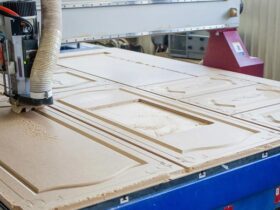The plasterboard wall, of course, differs from the brick. However, the fastening of shelves or even small lockers to it will be possible if special dowels are used. Much here depends on how many kilograms the fixed element will weigh. Incorrect calculation, as a result leads to deformation of the sheet, which is unacceptable.
Special dowels for drywall should have specific properties: to fix any mounted design as reliable as possible, while not to damage the thin sheet of material. With drywall, usually use two types of dowels: unclenching and passing. At the same time, the latter are used only on a horizontal surface (ceiling, niche, and t. P.). A spring dowel can have a threaded rod in its design, or folding locking wings (which is more preferable).
But for reliable fastening to the wall, you need to buy an unclenching dowel-butterfly in the store. Such a dowel is attached in two stages: first, a dowel is installed in the hole, but not completely, but leaving 2-3 mm outside. Then, the self -tapping screw is twisted (at the last stage, the dowel will begin to “tighten” into the wall, so the “butterfly” mechanism works).
You can notice: the dowels of the above designs have the same length (30 mm). From which it follows that a reliable mount to dowels is possible only on a double layer of “cardboard” (2 to 15 mm). Actually, one sheet is unlikely to withstand anything harder than a photo frame. But, in this case, it is easier to use a regular screw. Fastening to a double sheet – withstands a carpet or, for example, light shelves. The main thing is to rely on common sense, then, everything will work out correctly.








